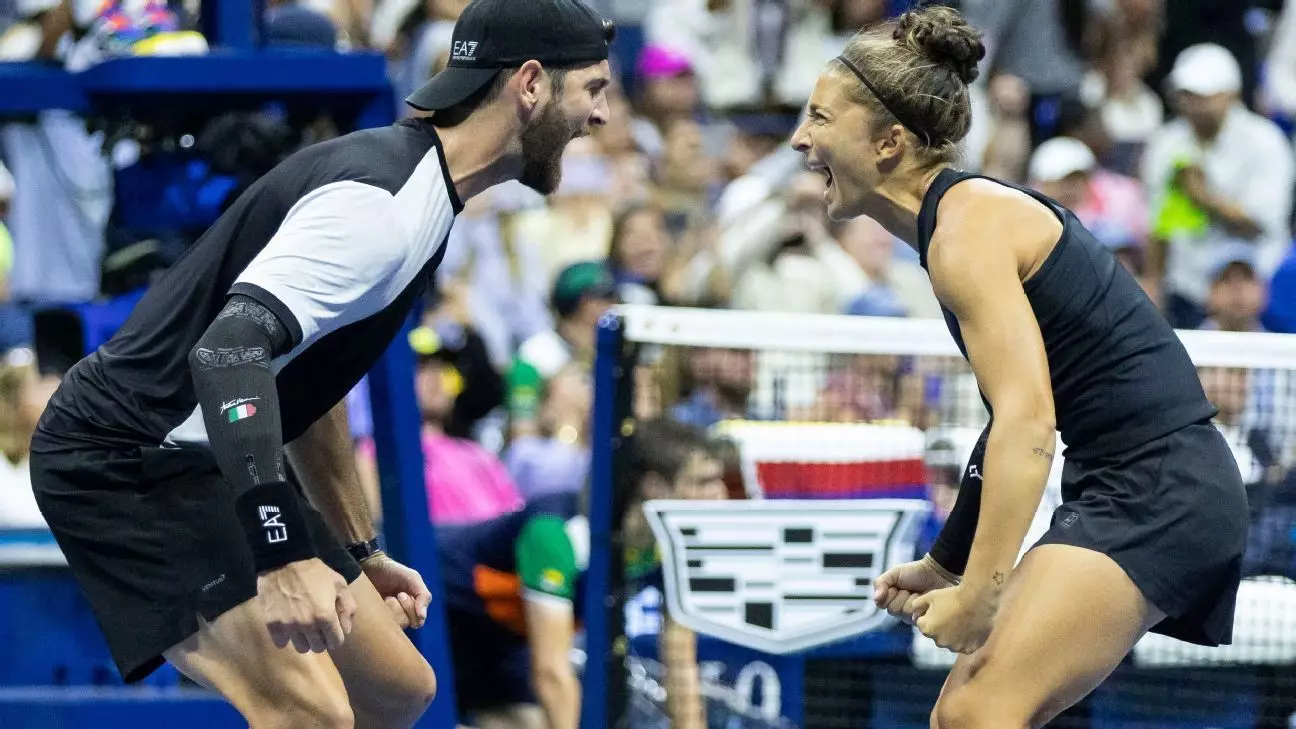This year’s U.S. Open delivered a compelling narrative that challenged traditional notions of tennis excellence. When organizers overhauled the doubles competition to prioritize singles stars and shortened formats, many critics predicted a diminished, predictable spectacle. However, the unexpected unfolded: a pair of veteran doubles specialists, Sara Errani and Andrea Vavassori, not only participated but triumphed, reasserting the profound significance of doubles tennis on its own terms. Their victory was more than a trophy; it was a statement that the essence of doubles—teamwork, strategy, and resilience—remains vital and captivating.
The tournament’s new format aimed to boost viewer engagement, hoping to draw large crowds and mainstream attention by featuring famous singles players in the doubles event, often at the expense of traditional doubles pairings. Though this approach was controversial among purists, Errani and Vavassori’s success revealed a different truth: when given a platform, doubles players can exhibit an electrifying mix of skill and heart that resonates with fans. Their story underscores that innovation in sport isn’t merely about rules changes; it’s about creating moments that ignite passion and demonstrate the enduring appeal of all facets of a game.
Underdogs Shining Bright in a Changed Landscape
The pairing’s victory was remarkable not just because they defeated high-caliber opponents like Iga Swiatek and Casper Ruud, but because it symbolized resilience in the face of skepticism. Many doubted whether champions specializing in doubles could thrive under a format that favored singles stars. Yet, Errani and Vavassori defied these odds, winning four matches in rapid succession and elevating the event well beyond a mere exhibition. It was an affirmation that doubles values tactical nuance and strategic depth—elements often sidelined in the singles-focused hype.
Errani’s venerable career, marked by a career Grand Slam in women’s doubles and an Olympic gold medal, provided her with a wealth of experience that translated seamlessly into this new arena. Vavassori’s agility and commanding net play, paired with Errani’s court awareness, made them a formidable team that exploited the unique conditions of the revamped tournament. Their victory was rooted not only in technical skill but in an unyielding belief that persistence and passion can defy the odds, even when systemic changes threaten to undermine tradition.
Reimagining Doubles: More Than Just a Coda to Singles
The decision to hold doubles matches early in the tournament aimed to spotlight the sport’s variety and attract larger crowds. While some critics derided the format as a “glorified exhibition,” the energy and visibility these matches generated proved otherwise. The packed stadiums and buzzing atmospheres demonstrated that fans crave high-stakes, fast-paced tennis regardless of the format. Errani and Vavassori’s victory, especially in front of a roof-closed Arthur Ashe Stadium, underscored the electrifying appeal of doubles when executed with passion and strategic excellence.
What’s particularly notable is how the event shifted the spotlight onto doubles players—often the underappreciated craftspeople of the sport. The ability to adapt, hustle, and execute under pressure was on full display, resonating with an audience hungry for authentic competition. This new chapter challenged the stereotype that doubles is secondary or merely a warm-up act, proving instead that when given the stage, doubles tennis can deliver compelling narratives and inspiring performances.
The Power of Passion in an Evolving Sport
Errani and Vavassori’s win was also a celebration of perseverance. Both players represented the broader community of doubles specialists who have historically lacked the spotlight, opting instead to perfect their craft outside the limelight of Grand Slam finals. Their victory is a powerful reminder that success isn’t solely measured by name recognition or endorsements but by dedication, teamwork, and heartfelt commitment to the sport.
This triumph also prompts a broader reflection: can tennis’s traditional hierarchy evolve without losing its soul? The U.S. Open’s bold experiment points to a future where variety and innovation coexist with tradition. Errani and Vavassori’s success is an act of defiance against the notion that only singles stars can carry the show. Instead, it champions the idea that every player—regardless of recognition—can create moments of greatness when given the right opportunity.
In a landscape dominated by rankings and star power, their story injects a refreshing authenticity into the sport. It emphasizes that resilience, strategic mastery, and sheer love of the game can elevate even the most overlooked competitors. As the tennis world continues to adjust and experiment, it’s crucial to remember that the heart of the sport lies in its players’ ability to inspire, surprise, and uplift us—qualities that Errani and Vavassori demonstrated beautifully on the grandest stage.

